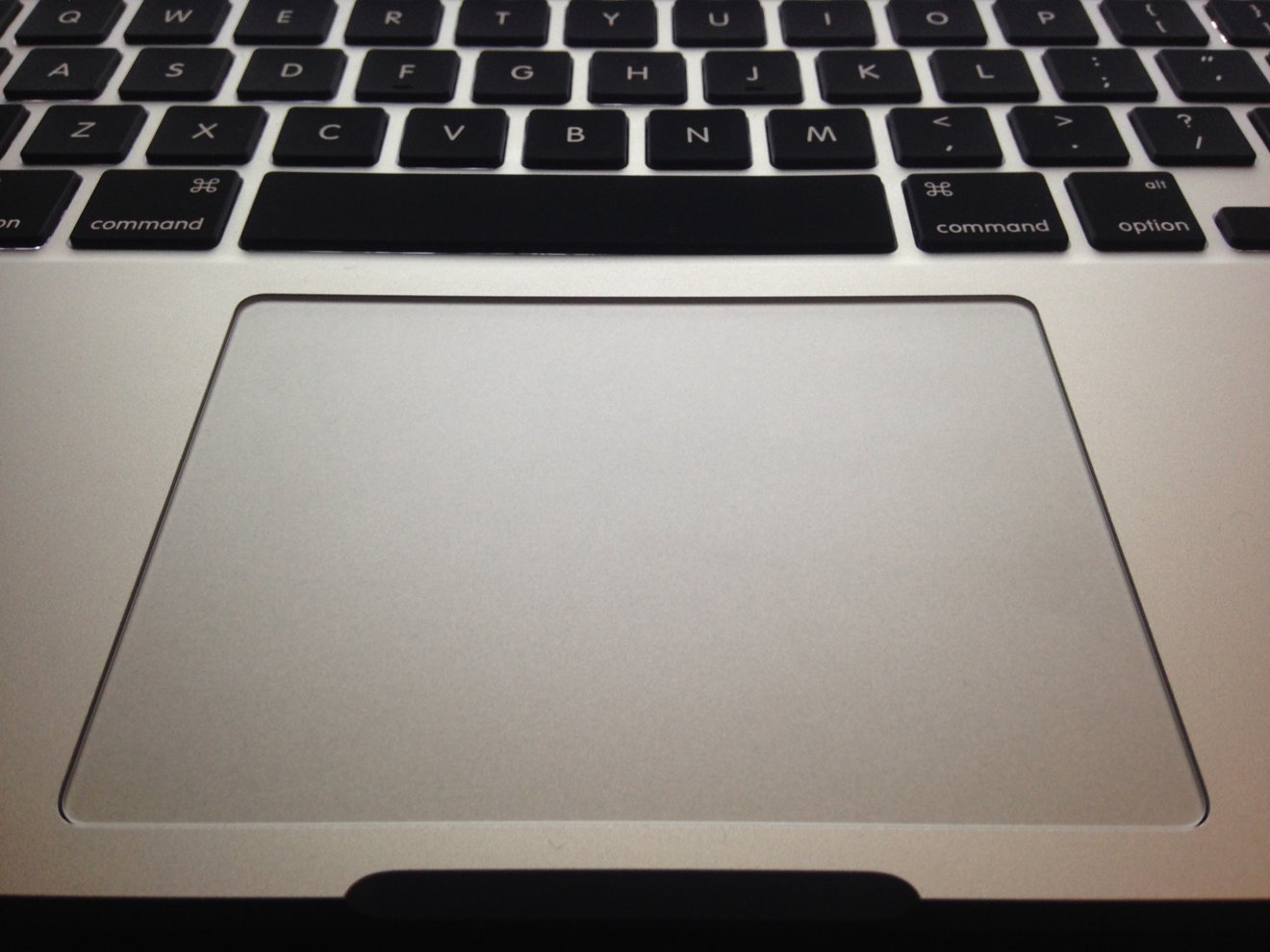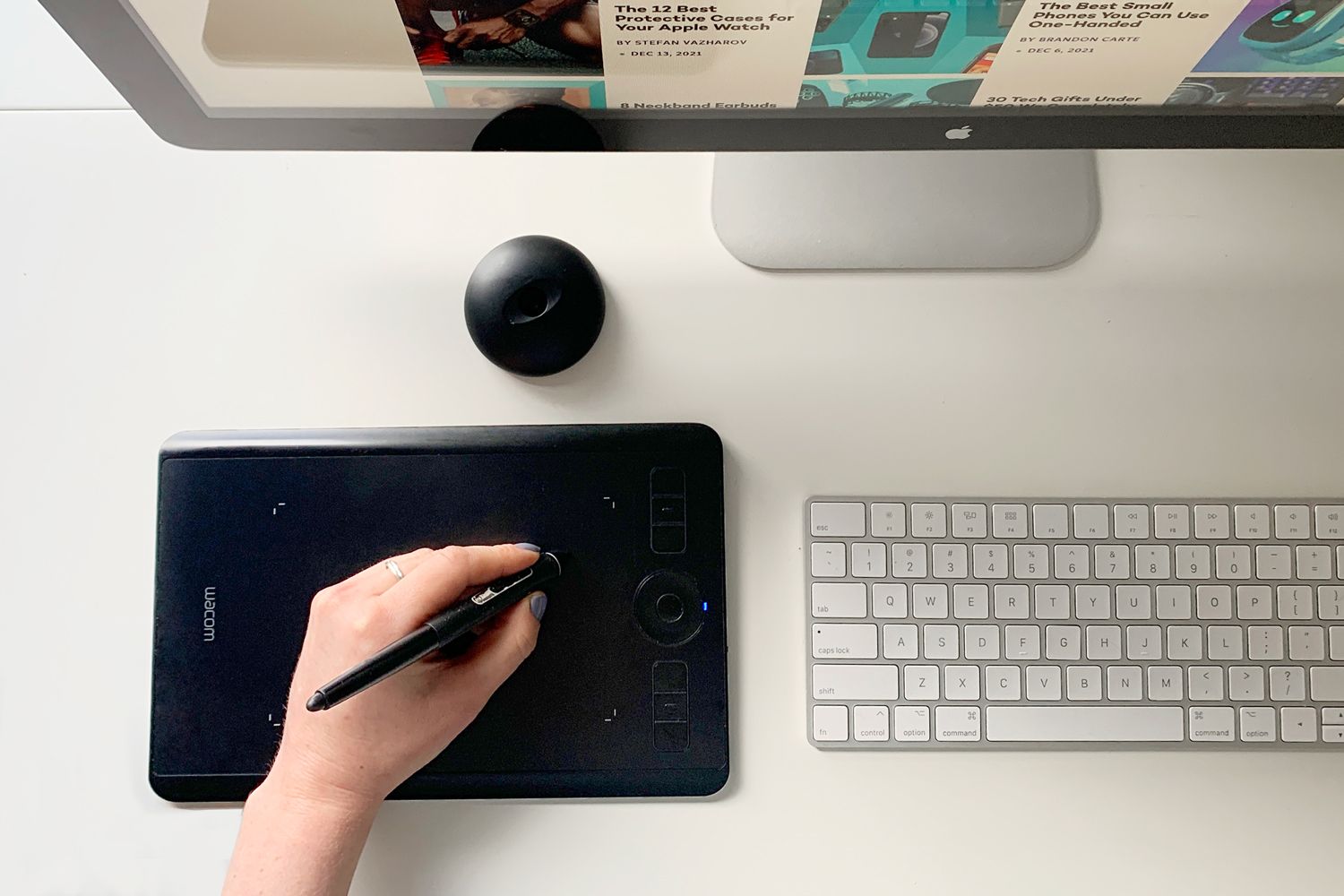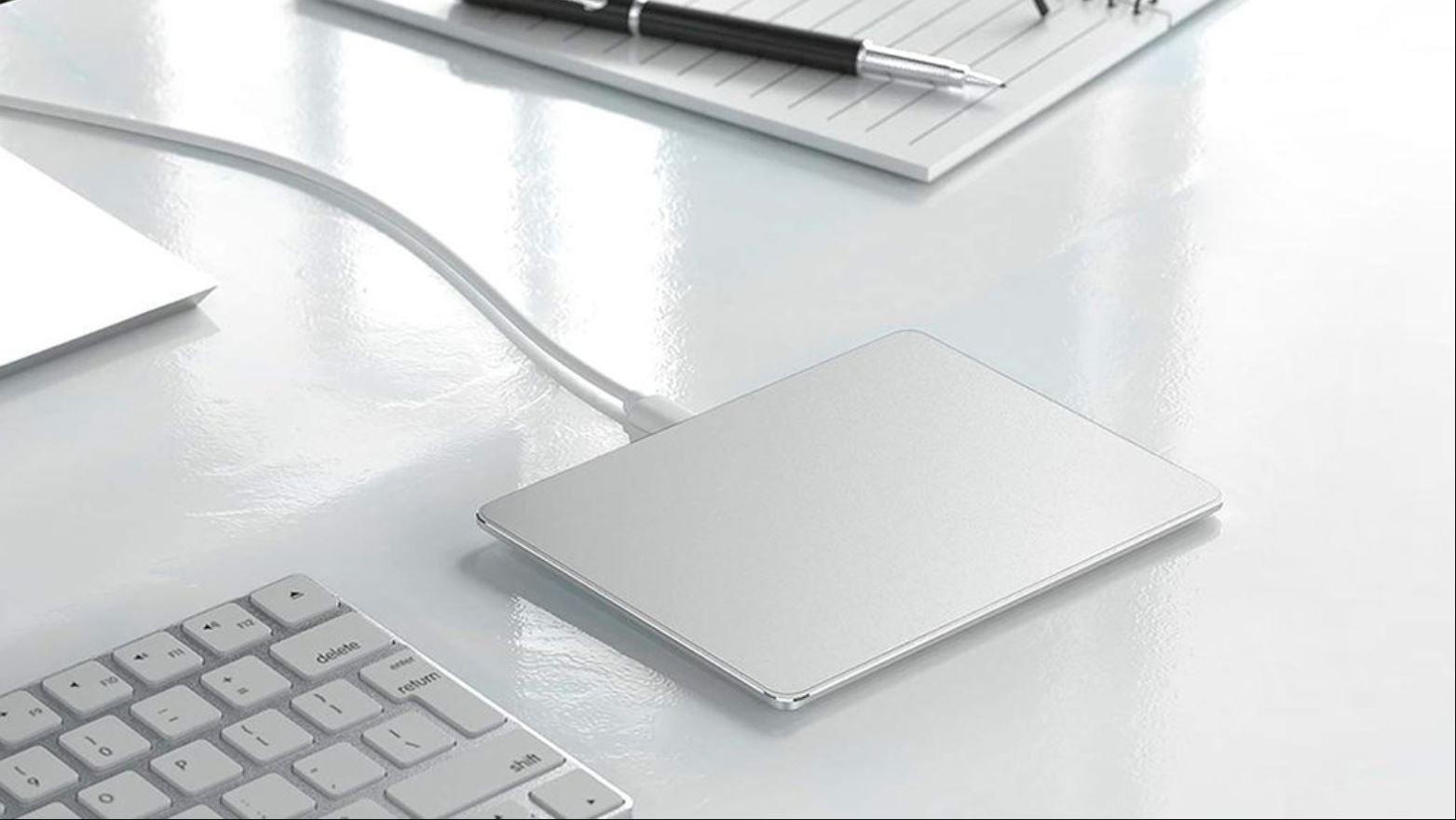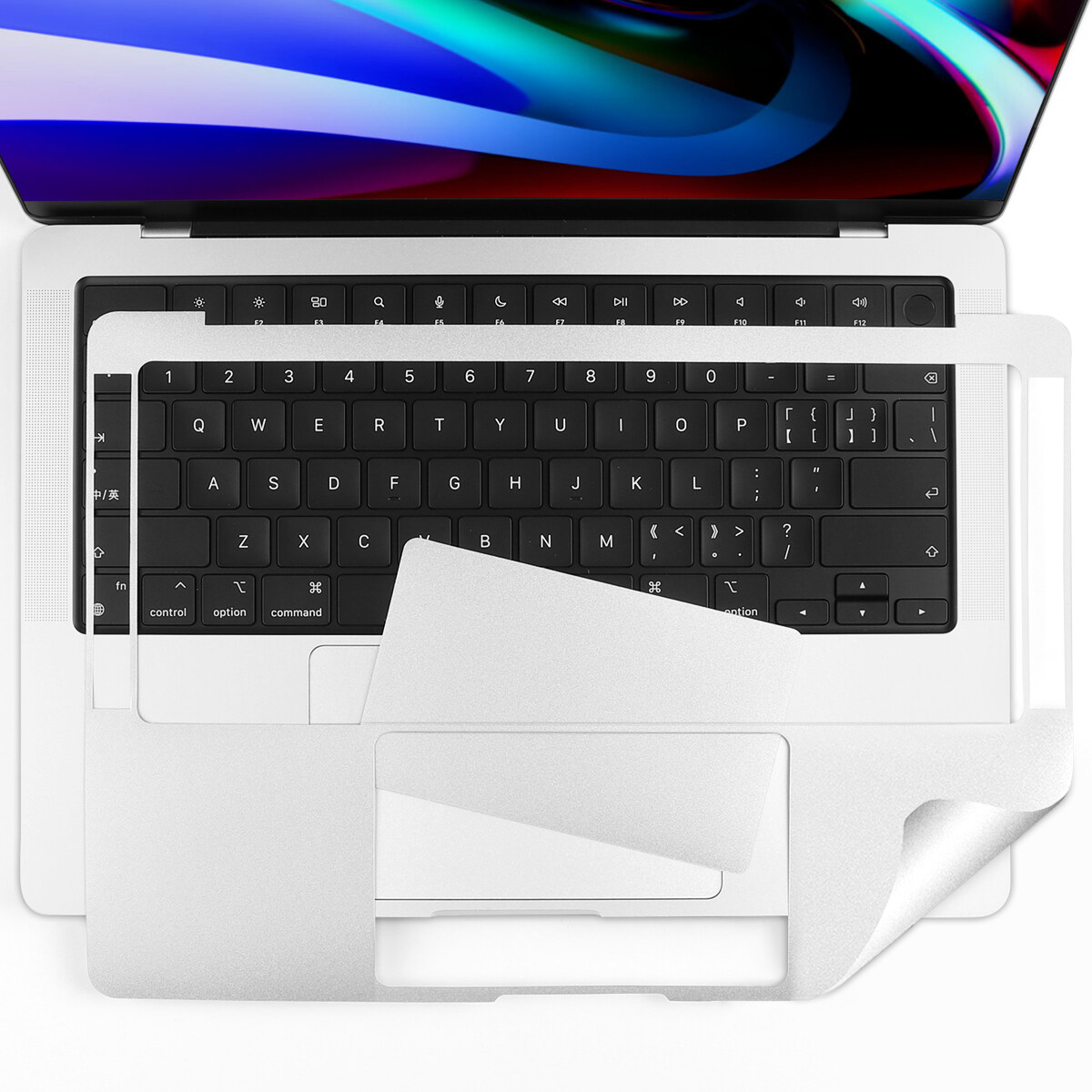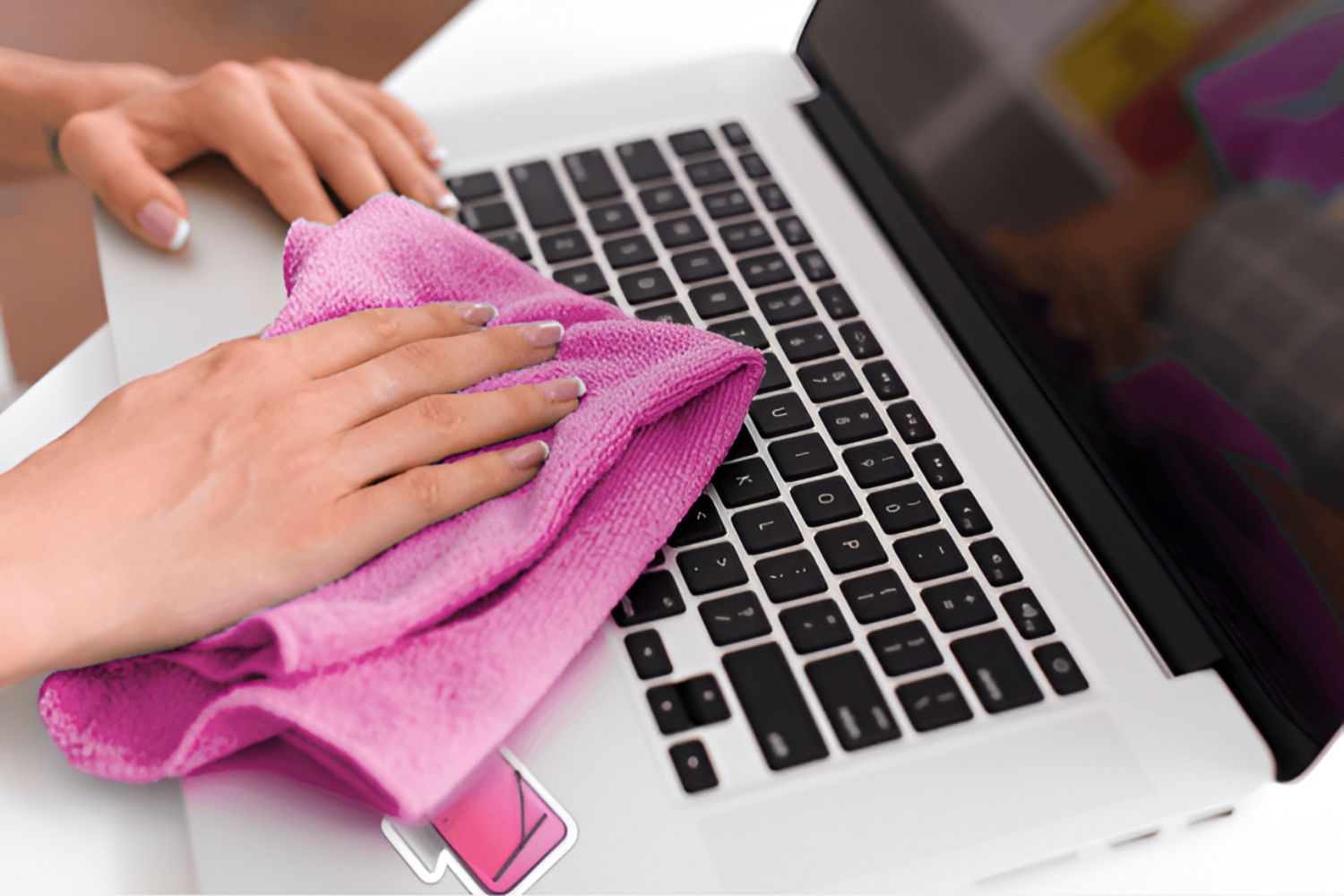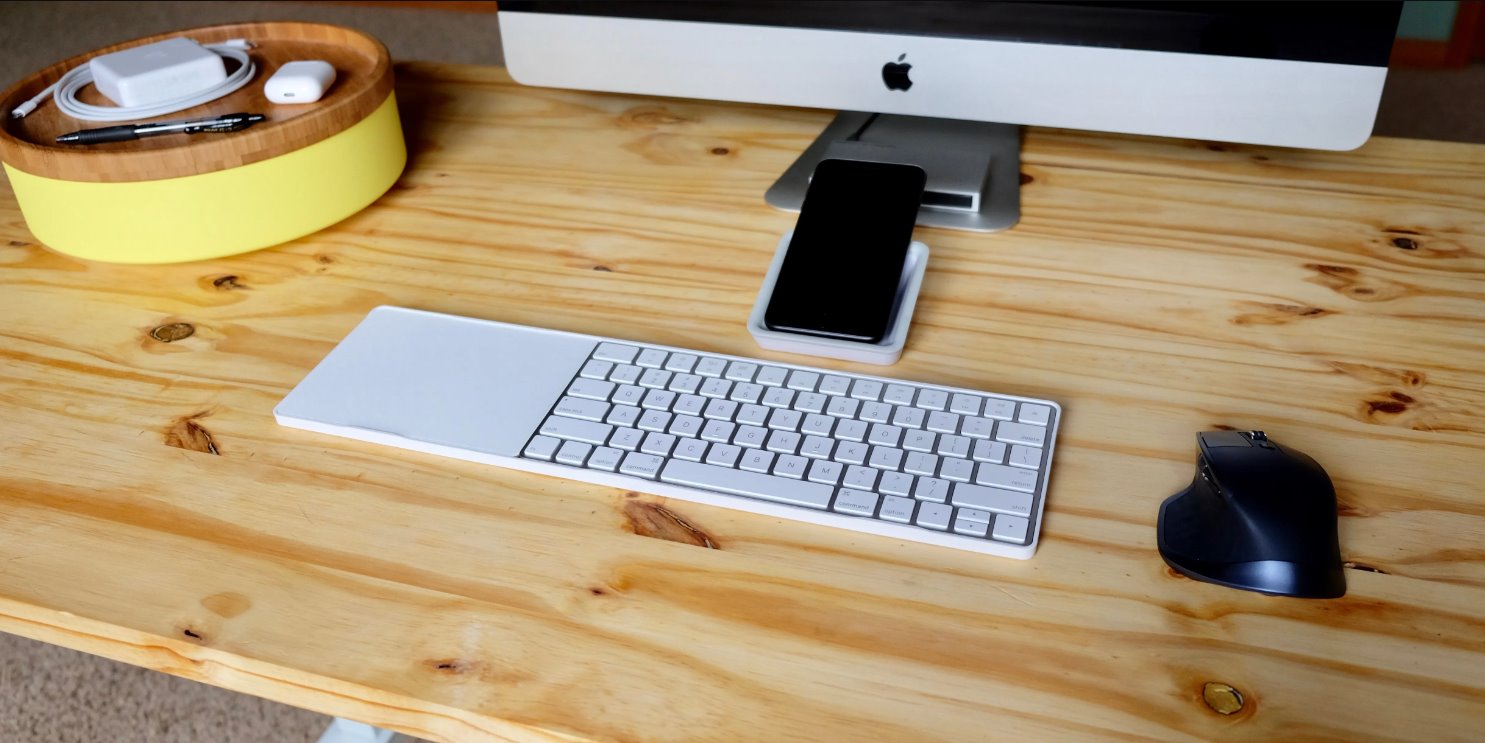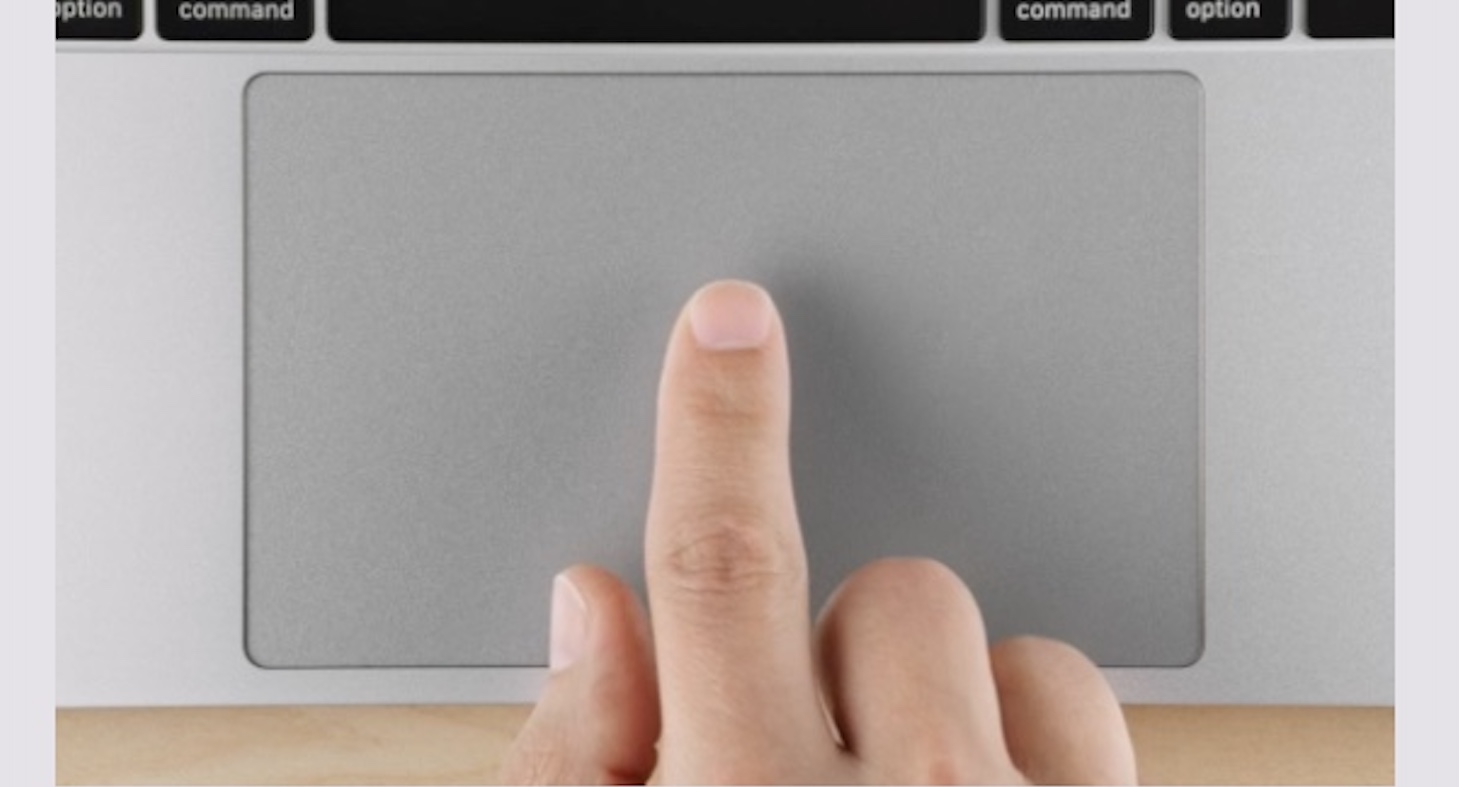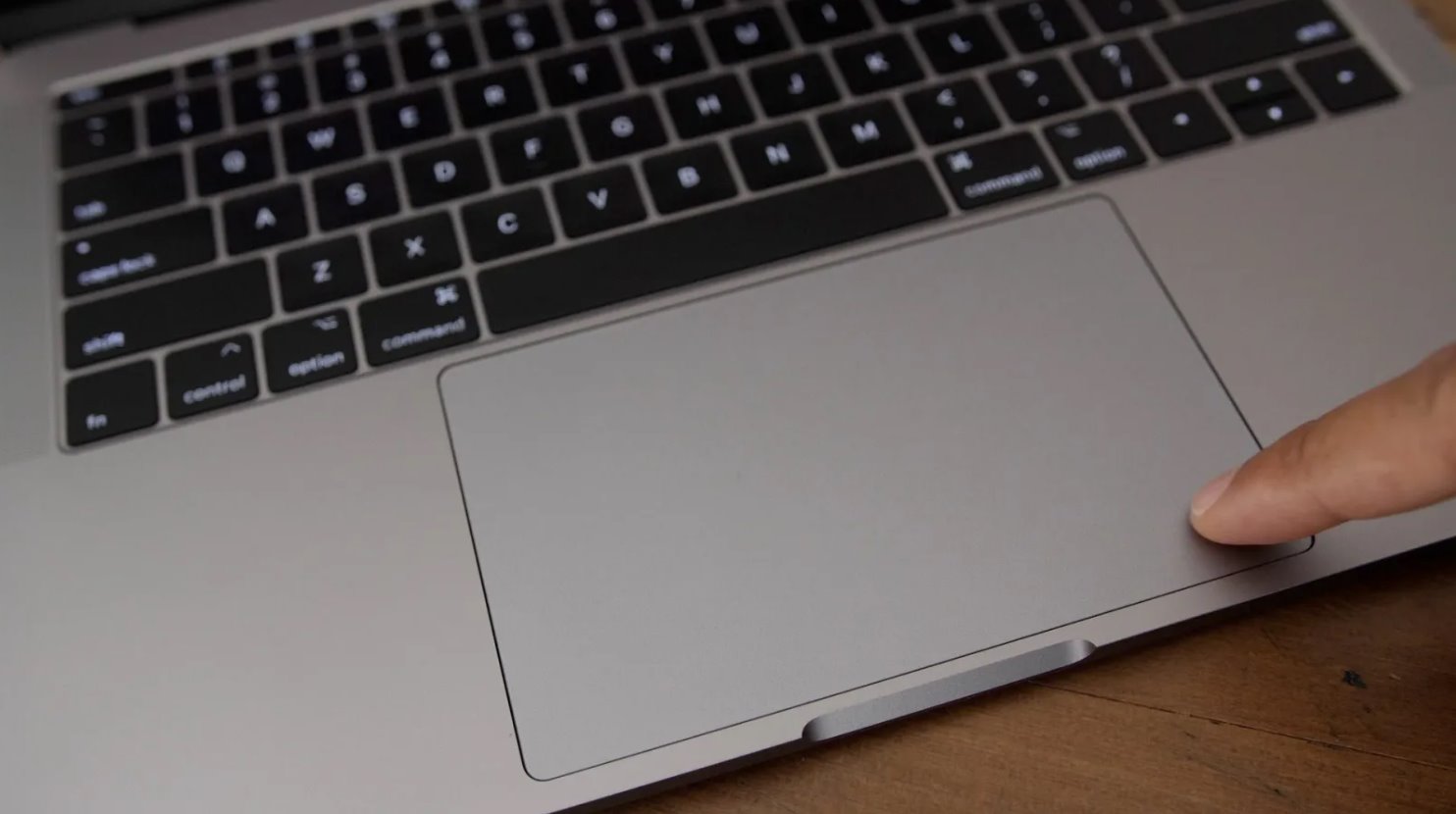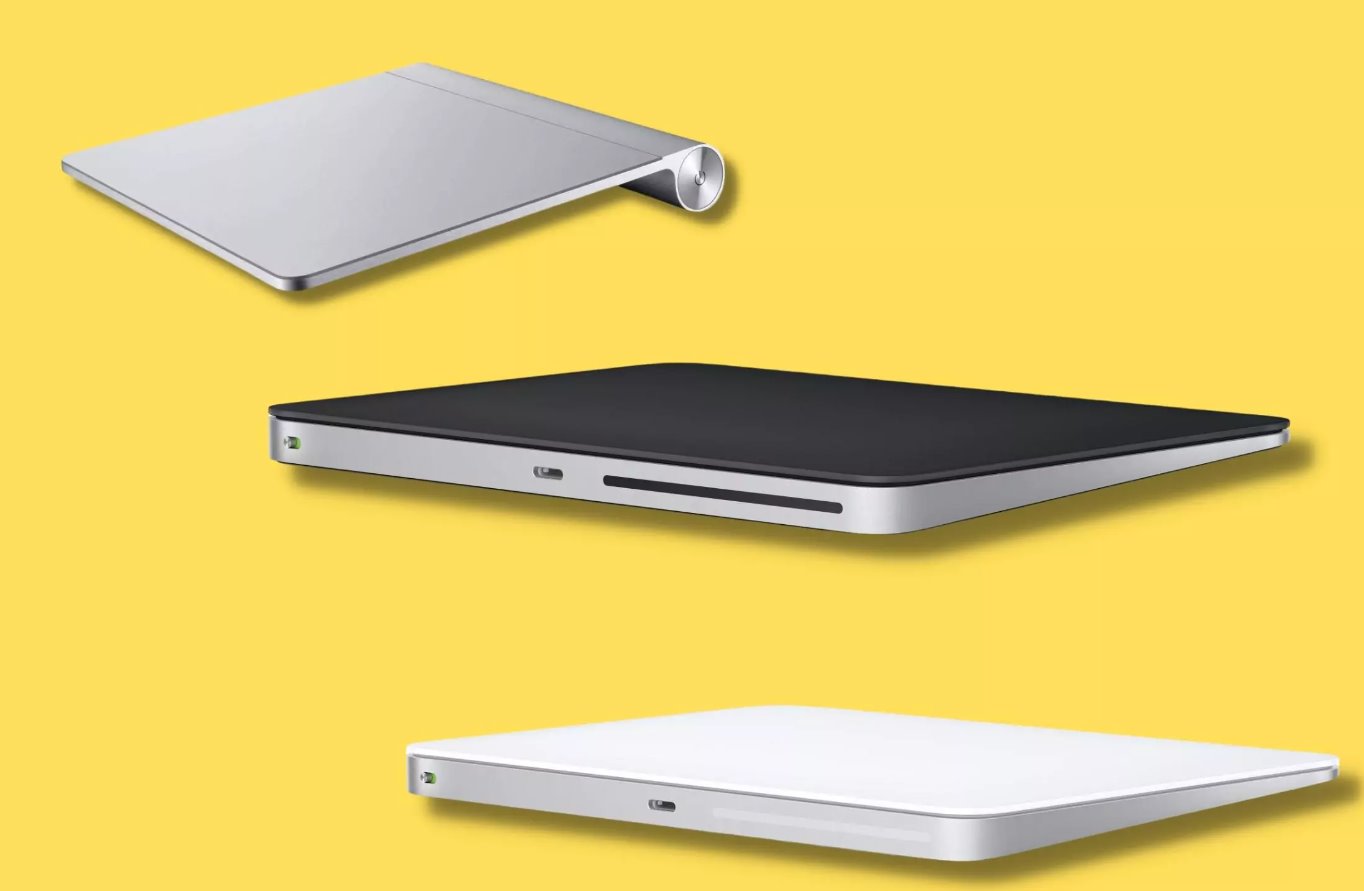Introduction
A trackpad is an essential input device found on Mac computers that allows users to navigate through their screens and interact with various applications and functions. It serves as a convenient and intuitive alternative to using a traditional mouse, offering users a smooth and precise way to interact with their Mac.
The trackpad on a Mac is a versatile tool that provides a wide range of functions and features to enhance user experience. Whether you’re scrolling through documents, zooming in on images, or using multi-touch gestures, the trackpad offers a seamless and efficient way to navigate through your Mac’s interface.
In this article, we will explore the various aspects of a trackpad on a Mac, including how it works, its features and functions, navigating and gestures, customizing trackpad settings, and troubleshooting common trackpad issues.
Whether you’re a new Mac user or simply looking to unlock the full potential of your trackpad, this guide will provide you with the knowledge and insights to make the most out of this essential input device.
What Is a Trackpad?
A trackpad, also known as a touchpad, is a built-in input device found on laptops and other electronic devices that allows users to control the cursor and interact with the screen through touch gestures. In the context of a Mac computer, the trackpad is located below the keyboard and serves as the primary means of navigation and interaction with the operating system and applications.
The trackpad on a Mac is a smooth, touch-sensitive surface that recognizes various gestures and movements, translating them into actions on the screen. It eliminates the need for a separate mouse or other pointing devices, providing users with a more compact and integrated solution for controlling their Mac.
Unlike a traditional mouse that requires physical movements on a desk or surface, a trackpad operates by sensing finger movements and gestures directly on its surface. It offers a more direct and tactile way to interact with the computer, making it especially convenient for tasks such as scrolling, zooming, and navigating through documents and web pages.
While the specific design and features of trackpads may vary across different Mac models, they all share the same basic functionality. These include detecting the position and movement of fingers, recognizing different types of touch gestures, and translating those gestures into corresponding actions on the screen.
Overall, the trackpad on a Mac is a critical tool that allows users to interact with their computers in a more intuitive and natural way. Its precision, responsiveness, and versatility make it an essential component for both casual users and professionals alike, enabling seamless navigation and control over the Mac’s interface.
How Does a Trackpad Work?
A trackpad on a Mac works based on a combination of hardware and software components that allow it to detect and interpret touch gestures. Let’s take a closer look at how this input device functions.
The trackpad consists of a touch-sensitive surface that uses capacitive technology to sense the presence and movement of fingers. Underneath the surface, there are tiny electrical circuits that form a grid. When you place your finger on the trackpad, the circuits detect the changes in electrical charge caused by your finger’s capacitance.
These changes in charge are then transmitted to the trackpad’s controller, which analyzes the data and determines the type of touch gesture being performed. The trackpad’s firmware and software work together to translate these gestures into specific commands or actions on the screen.
The software algorithms within macOS are designed to interpret various touch gestures and map them to specific functions. For example, a two-finger swipe upwards may trigger scrolling upwards on a webpage, while a pinch gesture with two fingers may trigger zooming in on an image or document.
In addition to recognizing basic gestures like taps, swipes, and pinches, newer Mac models are equipped with Force Touch technology. This feature adds an extra layer of sensitivity to the trackpad, allowing it to detect the amount of pressure applied by your fingers. This opens up additional possibilities for interacting with the Mac, such as triggering different actions based on the force of touch.
It’s also worth mentioning that the trackpad settings in macOS provide customization options to adjust the sensitivity, behavior, and functions of the trackpad. Users can customize gestures, enable or disable specific features, and fine-tune the trackpad’s responsiveness to suit their preferences.
Overall, the trackpad on a Mac is a sophisticated piece of technology that combines hardware and software components to provide an intuitive and precise input device. Its ability to detect and interpret touch gestures allows for seamless navigation and interaction with the Mac’s interface, enhancing the overall user experience.
Features and Functions of a Trackpad on Mac
The trackpad on a Mac offers a wide range of features and functions that enhance user productivity and ease of use. Let’s explore some of the key features that make the trackpad an indispensable tool for Mac users.
- Multi-Touch Gestures: One of the standout features of the trackpad is its support for a variety of multi-touch gestures. With simple finger movements, users can perform actions like scrolling, zooming, rotating, swiping between pages, and more. These intuitive gestures make it effortless to navigate through documents, web pages, and applications on a Mac.
- Force Touch: Macs equipped with Force Touch technology offer an additional level of interactivity. By applying varying levels of pressure, users can trigger different actions or access contextual menus. For example, a forceful click on a file icon can display a Quick Look preview, while a deeper press on a word can bring up a dictionary definition. This feature adds depth and versatility to the trackpad experience.
- Secondary Click: Similar to a right-click on a mouse, the trackpad supports a secondary click that allows users to access contextual menus and perform specific actions based on the selected item. The location and behavior of the secondary click can be customized in the trackpad settings to suit individual preferences.
- Scrolling and Navigation: The trackpad enables smooth and effortless scrolling for long documents, web pages, and other content. Whether using two-finger scrolling or the built-in momentum scrolling, users can quickly and fluidly navigate through large amounts of information. The trackpad also supports horizontal scrolling, making it easy to move sideways through wide documents or webpages.
- Smart Zoom: With a simple double-tap gesture, users can zoom in on a specific portion of the screen. This feature is particularly useful for enlarging text, images, or maps, allowing for detailed examination without having to perform complicated zoom actions.
- Gesture Navigation: In addition to basic gestures, the trackpad offers convenient navigation gestures like swiping between full-screen apps, accessing Mission Control to view all open windows, launching Launchpad for quick app access, and more. These gesture-based shortcuts make it effortless to navigate and switch between applications.
- Handwriting Input: For Macs equipped with Apple Pencil or stylus support, the trackpad can be used as a handwriting input device. Users can write directly on the trackpad to enter text, make sketches, or annotate documents. This feature is particularly handy for tasks that require precise input or drawing capabilities.
The trackpad on a Mac caters to a wide range of user needs, providing a seamless and interactive experience. Its support for multi-touch gestures, Force Touch technology, customizable settings, and various navigation functions make it an essential tool for Mac users to efficiently and intuitively interact with their devices.
Navigating and Gestures with the Trackpad
The trackpad on a Mac offers a wide range of gestures and navigation features that allow users to efficiently interact with their devices. Let’s explore some of the common gestures and how to use them:
- Scrolling: To scroll vertically through a document, webpage, or any other content, simply swipe up or down with two fingers on the trackpad. The content will move in the direction of your swipe, providing a smooth and responsive scrolling experience.
- Zooming: You can zoom in or out on a specific area of the screen by using a pinch gesture. Place two fingers on the trackpad and pinch them together to zoom out, or spread them apart to zoom in. This is particularly useful for enlarging text, images, or maps without losing clarity.
- Swiping: Use the three-finger swipe gesture to switch between full-screen applications or to activate Mission Control, which displays all open windows and allows for quick navigation between them. Swipe left or right with three fingers to move between desktop spaces and even switch between recent applications.
- Smart Zoom: Double-tap anywhere on the trackpad with two fingers to smart zoom into a specific area of the screen. This is particularly handy for quickly magnifying text or images in web pages, documents, or photos.
- Rotation: To rotate an object, such as an image or map, place two fingers on the trackpad and rotate them in a circular motion. This gesture allows for intuitive control over the rotation angle, providing a natural way to manipulate visual elements.
- Tap to Click: By default, tapping the trackpad with one finger acts as a primary click, simulating the click of a mouse. This saves time and effort by eliminating the need to physically press down on the trackpad. This feature can be enabled or disabled in the trackpad settings.
- Secondary Click: Similar to a right-click on a mouse, a secondary click can be performed by placing two fingers on the trackpad and clicking. This action opens up context-sensitive menus for quick access to additional options and functionalities.
- Swipe Between Pages: When working with web browsers, documents, or image galleries, you can swipe left or right with two fingers to navigate between pages or slides. This gesture provides a convenient way to move through content without the need for buttons or scrollbars.
- Spotlight Search: Using a three-finger tap on the trackpad, you can activate Spotlight Search and quickly search your entire Mac or perform web searches effortlessly.
These are just a few examples of the many gestures available on a Mac trackpad. Customizing the trackpad settings allows you to further personalize its behavior and gestures according to your preferences. The trackpad’s intuitive and responsive gestures make navigating through applications, documents, and web pages a seamless and efficient experience.
Customizing Trackpad Settings on Mac
The trackpad settings on a Mac allow users to customize its behavior and gestures to suit their preferences and workflow. Let’s explore how you can personalize the trackpad settings on your Mac:
To access the trackpad settings, go to the Apple menu and select “System Preferences.” Then, click on “Trackpad” to open the trackpad settings pane.
Here are some key customization options available:
- Point & Click: In this section, you can adjust the tracking speed of the cursor and enable or disable the “Tap to Click” functionality. Adjusting the tracking speed determines how fast or slow the cursor moves in response to your finger movements.
- Scroll & Zoom: This section allows you to change the scroll direction, whether it scrolls naturally (content follows your finger movement) or traditionally (content moves in the opposite direction of your finger movement). You can also enable or disable the “Smart Zoom” feature that allows you to double-tap with two fingers to zoom in and out on content.
- More Gestures: Here, you can customize the gestures for navigating, accessing mission control, app exposé, and more. You can enable or disable specific gestures and also change the associated finger movements for each gesture.
- Point and drag: This feature allows you to customize the behavior of pointing and dragging objects on the screen. You can choose between using three fingers or dragging with one finger to perform click and drag actions.
- Secondary Click: In the “Secondary Click” section, you can configure how you want to activate the secondary click function. You can choose the “Click in bottom right corner” or “Click in bottom left corner” options, or even assign it to the right or left edge of the trackpad.
- Force Touch: If your Mac supports Force Touch technology, you can adjust the sensitivity level of force clicks and enable or disable haptic feedback, which provides a tactile response when performing a force click.
As you explore the trackpad settings, you’ll discover many more customization options and accessibility features available. Experimenting with these settings allows you to personalize the trackpad’s behavior to your liking and optimize it for your specific needs and preferences.
By customizing your trackpad settings, you can create a more tailored and efficient user experience, making it easier and more comfortable to navigate and interact with your Mac.
Troubleshooting Common Trackpad Issues
While the trackpad on a Mac is a reliable and intuitive input device, there may be times when you encounter issues or experiences that hinder its functionality. Here are some common trackpad issues and troubleshooting steps to help resolve them:
- Unresponsive Trackpad: If your trackpad is not responding to touch or gestures, first ensure that your hands are clean and dry. Any moisture, dirt, or debris on the trackpad surface can interfere with its sensitivity. If the issue persists, try restarting your Mac and check if there are any system updates available. Resetting the SMC (System Management Controller) can also help resolve trackpad responsiveness issues.
- Cursor Jumping: If the cursor on your screen jumps or moves abruptly, it could be due to accidental palm or wrist contact with the trackpad. Adjust your hand position and ensure that only your fingers are making contact with the trackpad surface. Additionally, check for any external devices, such as USB devices or wireless mice, that may be interfering with the trackpad’s operation.
- Inaccurate Gestures: If the trackpad is not recognizing or responding correctly to your gestures, ensure that you are using the appropriate number of fingers and that your gestures are performed smoothly and distinctly. It’s also worth checking the trackpad settings to ensure that the correct gestures are enabled and properly configured.
- Bluetooth Connection Issues: If you are using a Bluetooth trackpad and experiencing connection problems, make sure that Bluetooth is enabled on your Mac and that the trackpad is properly paired. Try unpairing and re-pairing the trackpad, and if possible, test it with another device to see if the issue persists. Updating the Bluetooth driver or resetting the Bluetooth module may also help resolve connectivity issues.
- Erratic Cursor Movement: If the cursor on your screen is moving sporadically or uncontrollably, it could be due to a physical issue with the trackpad itself. Check for any visible damage on the trackpad surface or if any foreign objects are lodged between the surface and the chassis. Cleaning the trackpad gently with a lint-free cloth or replacing it if necessary might be required.
- Intermittent Gestures: If certain gestures work intermittently or inconsistently, it may be due to conflicting software or conflicting settings. Check for any third-party software that may have conflicting trackpad settings and consider temporarily disabling or removing such software. Additionally, ensure that your operating system and trackpad drivers are up to date.
- Battery Drain: If you are using a wireless trackpad with batteries, monitor the battery level and replace them if necessary. Low battery levels can result in reduced trackpad responsiveness or complete failure. Consider using rechargeable batteries for cost-effective and environmentally-friendly power.
If the troubleshooting steps above do not resolve your trackpad issues, it may be necessary to seek further assistance from Apple Support or an authorized service provider. They can provide more advanced troubleshooting steps or repair services, if needed.
By following these troubleshooting steps, you can often resolve common trackpad issues and restore its functionality, ensuring a smooth and efficient user experience with your Mac.
Conclusion
The trackpad on a Mac is a versatile and powerful input device that offers a wide range of features and functions to enhance user productivity and interaction with their devices. From multi-touch gestures to customizable settings, the trackpad provides a seamless and intuitive way to navigate through applications, documents, and web pages.
We explored what a trackpad is and how it works, diving into its hardware and software components that allow for precise finger tracking and gesture recognition. Additionally, we discussed the features and functions of the trackpad, highlighting its support for multi-touch gestures, Force Touch technology, and secondary click options.
Navigating and using gestures on the trackpad has become second nature for many Mac users. We discussed common gestures such as scrolling, zooming, swiping, and smart zoom, enabling users to navigate through content effortlessly and interact with various elements on their screens.
Furthermore, we explored how to customize trackpad settings to personalize its behavior and make it perfectly suited to individual preferences. Adjusting options like tracking speed, scroll direction, gestures, and secondary click settings allows users to optimize their trackpad experience for maximum comfort and efficiency.
Lastly, we addressed common trackpad issues and provided troubleshooting steps to resolve them. By following these steps, users can overcome unresponsiveness, cursor jumping, gesture inaccuracies, and other common trackpad-related problems, ensuring the smooth and consistent operation of their trackpad.
In conclusion, the trackpad on a Mac is a powerful tool that greatly enhances the user’s interaction and productivity. With its rich set of features, customizable settings, and intuitive gestures, the trackpad provides a seamless and efficient way to navigate through macOS, interact with applications, and accomplish tasks with ease.







